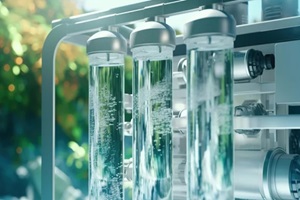 Good water quality is essential for leading a healthy life. Although Hawaii ranks favorably among U.S. states with the best tap water, it has its fair share of contamination issues. Sewage, industrial pollution, and agricultural runoff threaten the state’s water quality.
Good water quality is essential for leading a healthy life. Although Hawaii ranks favorably among U.S. states with the best tap water, it has its fair share of contamination issues. Sewage, industrial pollution, and agricultural runoff threaten the state’s water quality.
This guide will discuss the causes of water contamination in Hawaii and its health implications. We will also cover the role of water filtration in upholding water quality standards.
Hawaii’s Unique Water Quality Challenges
Hawaii comprises 137 islands, each exhibiting a distinct geology and hydrology. As a result, unifying the management of water sources is challenging. The state’s reliance on groundwater worsens the problem, as aquifers are susceptible to contamination.
In addition, Hawaii’s tropical climate is associated with high precipitation levels, which cause erosion, sedimentation, and overflowing sewage systems. The state also has rugged topography, which impedes waste management.
Major Sources of Water Contamination in Hawaii
Owing to its unique geography, climate, and industrial activities, Hawaii’s water is susceptible to various pollutants. Here are the leading sources of water contamination in the state:
Volcanic Activity
Hawaii has more than 129 volcanoes, including 15 recently erupted volcanoes on eight main islands. Volcanic activity is associated with toxins, such as heavy metals, sulfur dioxide, and acidic chemicals, contaminating water supplies.
Agricultural Activities
Agricultural activities cover almost half of Hawaii’s lands and contribute significantly to the state’s water quality issues. Most plantations rely on pesticides, herbicides, and fertilizers, which leach into water sources.
Urban Pollution
According to the Hawaii State Department of Health, there are 43,000 contaminated cesspools in the state. These cesspools release over 53 million gallons of untreated human waste into the ground daily.
Also, aging sewer systems in Hawaii’s urban areas discharge overflows of untreated sewage into waterways.
The Science Behind Water Filtration Technologies
Water filtration in Hawaii aims to address contamination challenges. It involves using various technologies that rely on physical and chemical processes to remove impurities. The following are common water filtration technologies used in Hawaii:
Reverse Osmosis
 This is a physical filtration process that relies on osmosis and membrane separation. Contaminated water is passed through a semipermeable membrane that removes dissolved solids like heavy metals. The technology is highly effective, removing over 99% of all water contaminants.
This is a physical filtration process that relies on osmosis and membrane separation. Contaminated water is passed through a semipermeable membrane that removes dissolved solids like heavy metals. The technology is highly effective, removing over 99% of all water contaminants.
Activated Carbon Filtration
Activated carbon filtration is an ideal approach if the primary concern is odors and bad taste in water. It entails passing the water through a carbon filter, which traps chlorine and volatile organic compounds, among other chemicals.
Ultraviolet Disinfection
Exposure to UV radiation can exterminate microbial contaminants, such as E. Coli, Giardia, Cryptosporidium, and hepatitis A. UV filtration technology is commonly used with other techniques to reduce the levels of microbes in water.
The Benefits of Installing a Water Filtration System
Hawaii’s water filtration systems are designed to remove impurities that impact drinking water’s quality, safety, and taste. Water filtration prevents health problems like gastrointestinal issues, skin irritation, and chronic illnesses.
Besides addressing contamination challenges, water filtration systems offer the following benefits:
Cost-Savings
The initial cost of a filtration system may be high, but it’s significantly lower than the cumulative cost of buying and transporting bottled water over time.
Convenience
Water filtration can be point of use (POU) or point of entry (POE). The latter is highly convenient as it treats water as it enters the home, meaning all faucets receive filtered water.
POU systems can also be installed on all faucets dispensing drinking water. Also, a water filtration system saves you the hassle of storing and transporting bottled water.
Eco-Friendly Option
According to the EPA, plastic bottles used to package drinking water are a major environmental problem, with less than 30% being recycled.
Installing a filtration system eliminates plastic waste while reducing carbon emissions associated with their production and transportation.
How to Choose the Right Filtration System for Your Home
The following considerations should inform your decision when choosing a water filtration system:
- Types of contaminants: A professional test will help determine the types of impurities in your water, which should inform the decision on the most suitable technology.
- Budget: The cost of a system will vary significantly across different technologies and brands.
- Capacity: The household size will determine the water capacity that needs to be filtered.
 Quality certifications: Reliable systems are certified by NSF International, Underwriters Laboratories (UL), or the Water Quality Association (WQA).
Quality certifications: Reliable systems are certified by NSF International, Underwriters Laboratories (UL), or the Water Quality Association (WQA).- Maintenance requirements: Water filtration systems have different maintenance needs. Some require frequent filter replacements or membrane cleaning, while others require less maintenance.
Take Control of Your Water Quality With Hawaiian Cool Water
Hawaiian Cool Water offers state-of-the-art water filtration systems to meet Hawaii’s unique water quality challenges. Its competitively priced systems effectively remove impurities, ensuring safe drinking water.
Contact Hawaiian Cool Water today to purchase a residential or commercial water filtration system.


